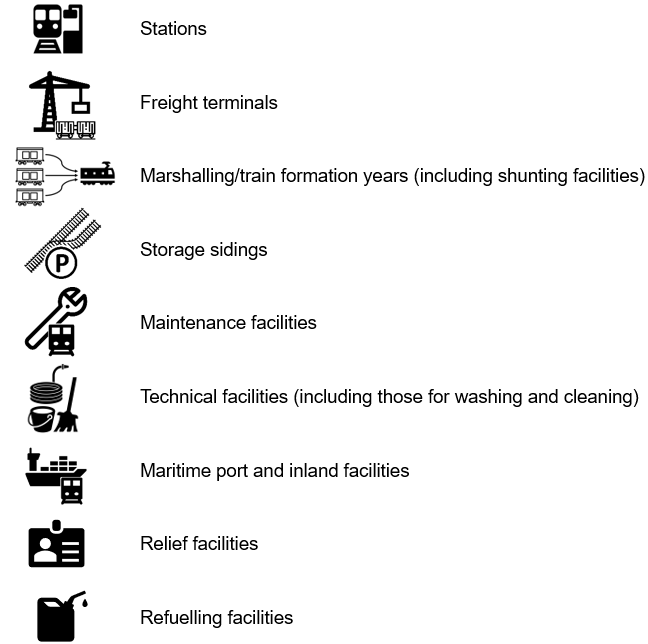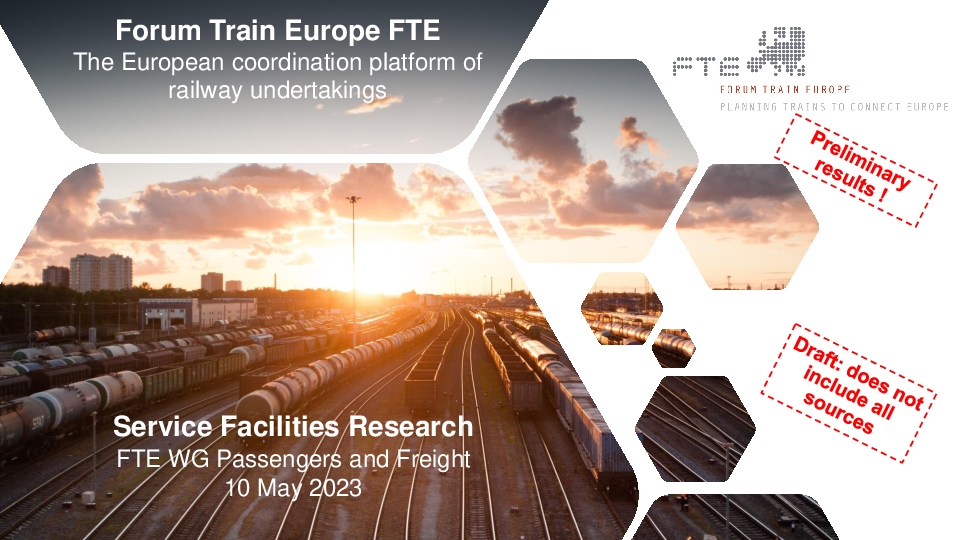Connected Facilities and Capacity Management
Rail connected facilities are a broad yet crucial category of railway infrastructure. With each train path and train movement, there is always an associated need for one or multiple types of rail connected facility. This can include a slot at a station, a spot to store the train, access to a freight terminal for loading or unloading goods, service at a maintenance facility, and more. Without access to such facilities, a train cannot operate or serve fully its purpose, thus making rail connected facilities and their access just as important as the railroad tracks and paths that connect them. With the variety of types of rail connected facilities, there is also a wide variance in ownership, which can be owned and maintained by infrastructure managers, independent companies, or even railway undertakings themselves. FTE and its members highlight the importance of rail connected facilities as an essential element of improving the competitiveness of railways and the international operation.
There are numerous types of rail connected facilities, each with its own relevance for passenger and/or freight undertakings. Below are listed some of the most important rail connected facilities as defined by the European Union in the Single European Railway Area directive (SERA):

Rail connected facilities pose many challenges from the perspective of capacity management and timetabling. Many of these challenges have thus far not been sufficiently tackled by the railway sector, with most of the consequences of inaction falling on railway undertakings. Firstly, the involvement of service facility owners and railway undertakings´ needs into the infrastructure development is limited and not internationally aligned. Secondly, current processes for the allocation of capacity do not sufficiently include the associated space/services/slots that are needed at the relevant rail connected facility. This means that railway undertakings must often independently contract with the relevant facilities, with no guarantee that their availability will match the train paths that they have been allocated. The fragmentation of rail connected facilities and different processes and access conditions makes harmonization with path allocation difficult and cumbersome, moreover, this can lead to facilities which are not adequately equipped to manage the demands of the market. There are many situations where problems can arise, for example:
Processes for planning capacity restrictions for maintenance works often do not consider the effect on access to rail connected facilities.
Storage sidings are often removed to save money, meaning less trains can be stored, and ultimately meaning less trains can be run than otherwise could be.
Railway undertakings are dependent on infrastructure managers and their processes for capacity allocation and timetabling. When these processes do not sufficiently integrate rail connected facilities and this negatively effects the running of the train, the loss is ultimately borne by the RU. For RUs this means delays, cancelled trains, irregular service, loss of profits, higher administrative burden, and in the end the lower competitiveness of rail compared to trucks and buses for freight and passengers. With the development of new and harmonized processes for timetabling and capacity management comes opportunities for the integration of rail connected facilities into such processes. This can increase efficiency and improve the business outlook for RUs.
FTE work on this topic
Members of FTE, of which more of them are also rail connected facilities (service facilities) owners, underline the need to improve the alignment of processes for facilities and rail planning and capacity allocation. This need was also mentioned by numerous stakeholders during the consultation process for the initiative of the European Commission “International freight and passenger transport – increasing the share of rail traffic”. It can be also assumed that the topic will also be part of the Greening Transport Package envisaged for 2023-2024.
FTE currently does not run a dedicated project for Service Facilities, nevertheless, FTE members cooperates with university students, who are conducting the research in this area, under FTE supervision.
In period January – July 2023, the research focused on the facilities: Storage Sidings and Freight Terminals.
In period September – December 2023, the research focuses on the facilities: Storage Sidings.
The summarising presentation of the preliminary results from spring is available below, please note the disclaimers in the document. The first draft report from the spring research expected to be published in December 2023.
